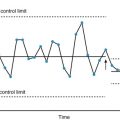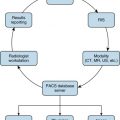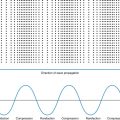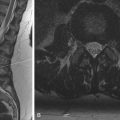Abstract
A rapid growth in medical imaging tests since the 1990s has prompted concerns within the medical community and the public over patient exposure to ionizing radiation. Several quality assurance and improvement programs have been initiated to address these concerns. The Image Gently campaign focuses on reducing radiation dose from CT exams in children and has been endorsed by several professional medical organizations. Step Lightly is a similar campaign that focuses specifically on reducing radiation dose to children undergoing interventional radiologic procedures. The momentum generated by Image Gently was continued with Image Wisely, which carries the principles of lowering radiation dose while maintaining image quality to adult patient populations. The Dose Index Registry allows participating facilities to compare their dose data from CT exams to regional and national values and aims to encourage users to undertake quality measures to improve their dose profile. In addition to concerns over radiation exposure, the medical field, and radiology in particular, have been cited for not doing enough to prevent unnecessary medical tests and procedures. The Choosing Wisely campaign aims to ensure that medical tests are performed only when truly necessary and that they do not result in patient harm. Several additional national programs and organizations that contribute to improving medical and radiologic practice quality are briefly discussed.
Keywords
Choose Wisely, Dose Index Registry, Image Gently, Image Wisely, quality, radiation dose, Step Lightly
In recent years there have been several initiatives dedicated to improving radiologic standards of practice. Many of these programs, such as “Image Gently,” “Image Wisely,” “Step Lightly,” and the Dose Index Registry, address growing concerns over patient exposure to high levels of ionizing radiation from radiologic exams and raise awareness in both the medical community and public to these trends while taking steps to curtail radiation dose where reasonably achievable. Other programs, such as “Choosing Wisely,” were initiated in recognition of the frequent overuse of medical tests and procedures—including radiologic exams—and aim to eliminate unnecessary tests through improved screening methods, clinician education, and systemic checks and balances. This chapter summarizes these programs and comments briefly on several additional national programs and organizations that contribute to improving medical and radiologic practice quality.
Image Gently
Several studies have documented a rapid growth in computed tomography (CT) use in children since the advent of helical CT scanning, especially in the emergency department (ED) setting. From 1995 to 2008, there was a fivefold increase in CT exams in children visiting the ED. Over this time, the annual growth rate of CT use in pediatric ED visits was 13.2%. There are several reasons for this dramatic increase in CT in pediatric ED settings; most significantly, it paralleled technological advancements that allowed high-quality CT exams to be performed in a matter of seconds, which in turn usually obviated the need for sedation. Other proposed factors include the ability of CT to improve ED throughput, cost savings due to more accurate diagnoses, fear of malpractice, and repeat imaging due to breakdowns in communication.
The main concern over the increased use of CT in children is the risk of radiation-induced cancers. It is generally accepted that children are more susceptible to the effects of ionizing radiation from CT exams, due to a larger number of dividing cells and because they have more years of life for cancer induction to occur. A landmark paper by Brenner et al. in 2000 estimated that of 600,000 annual CT exams performed on children, an estimated 500 will ultimately die of radiation-induced cancer from the CT exam. A more recent study from the United Kingdom in 2012 estimated a 3.2 times greater risk of leukemia and a 2.8 times greater risk of brain cancer in children receiving effective doses currently in use.
In recognition of these trends and public health concerns, in 2006 the Society of Pediatric Radiologists (SPR) formed a committee to raise awareness within the medical community to the harmful effects of ionizing radiation exposure in children. In 2007, the SPR collaborated with the American College of Radiology (ACR), the American Society for Radiologic Technologists (ASRT), and the American Association of Physicists in Medicine (AAPM), to form the Alliance for Radiation Safety in Pediatric Imaging (ARSPI). The main purpose of the Alliance was to improve awareness in the imaging community and among pediatricians of the increasing use of CT in children and the potential harmful effects of ionizing radiation. The ultimate goal was to improve practice by reducing CT dose in children. One of the early actions of the campaign was to encourage imaging professionals to take a pledge to image gently. The pledge included the following:
- 1.
Spreading the Image Gently message among staff
- 2.
Evaluating protocols and making adjustments where appropriate to reduce dose
- 3.
Respecting and listening to suggestions from every member of the imaging team
- 4.
Communicating openly with parents
Much of the Alliance’s initial efforts went to educating imaging professionals in primarily adult hospital settings. In a 2008 article in the American Journal of Radiology (AJR), the core principles of the Image Gently campaign were outlined as follows:
- 1.
Reduce or “child size” the radiation dose. The radiologist, technologist, and medical physicist should work together to adjust the kVp and mAs according to the size of the patient. Protocols for children are listed on the Image Gently website.
- 2.
Scan only when necessary. For each proposed CT exam, the expected benefit of the exam must outweigh the risk of ionizing radiation exposure. This requires a discussion between the radiologist consultant and the referring physician.
- 3.
Scan only the indicated region. Every attempt should be made to limit radiation exposure to the area of clinical concern. For example, if an incidental lung nodule is being monitored, it is unnecessary to scan the entire chest.
- 4.
Scan once. Multiphase exams needlessly double or triple radiation dose and rarely provide more clinically relevant information.
Understandably, the first phase of the campaign focused on spreading their message to imaging professionals, including radiologists, technologists, and medical physicists. The next phase targeted referring physicians—pediatricians, emergency physicians, surgeons, and oncologists. Finally, the third phase focused on parents and the general public. The campaign effectively used social marketing to spread their message, including an Image Gently website, press releases, public service announcements, and healthcare blogs.
Studies performed more recently have suggested that CT use in children has stabilized or begun to decrease. A study in 2013 analyzing data from six major national health organizations showed stabilization followed by a slight decline in pediatric CT since 2007. The reasons for this trend are not entirely clear, but are likely due in part to efforts of the Image Gently campaign to raise awareness in the medical community to the harmful effects of ionizing radiation in children. However, the paper also made clear that there is still much room for improvement. For example, the authors estimated that applying the ALARA (as low as reasonably achievable) principles to reduce the highest 25% of doses to the median level would result in a 43% reduction in radiation-induced cancer in the future.
As of 2015, 91 organizations joined the Image Gently campaign and there have been more than 35,000 pledges. The Image Gently website serves as an excellent resource on radiation exposure from radiologic exams for imaging professionals, pediatricians, and parents. Although there is an emphasis on CT, radiation exposure from other radiologic exams, such as radiography, fluoroscopy, and nuclear medicine studies, is also addressed. The website also makes available appropriate CT protocols for children, a feature that several institutions have used. The protocols listed are a good starting point from which facilities may adjust techniques to further reduce dose while maintaining diagnostic quality.
Step Lightly
With the well-documented risk of malignancy for children exposed to increased radiation levels since the 1980s, the medical community has made great leaps in the effort to reduce the number of CT exams in children and to create pediatric protocols that reduce CT dose. Often overlooked, however, are other radiation-intensive exams and procedures. Encouraged by the success of the Image Gently campaign, in 2009 the Alliance for Radiation Safety in Pediatrics launched a similar initiative directed specifically at interventional radiology. This new program was titled Step Lightly, in reference to the idea that interventionalists should tread lightly on the foot-pedal by which images are obtained in the interventional suite.
A team of interventional radiologists, medical physicists, and radiation technologists developed a set of recommendations to inform the actions of the medical professionals ordering and performing interventional procedures. A checklist of important steps for reducing radiation dose to pediatric patients undergoing image-guided procedures now serves as a reminder to the treatment team, which is especially critical in facilities that are more accustomed to treating adult patients. The checklist highlights using alternatives to ionizing radiation such as ultrasound, and to use child-sized doses by adjusting acquisition parameters and collimating when using fluoroscopy. Advice and explanations for parents of patients are also provided via the Step Lightly section of the Image Gently website.
In the quest for achieving lower all-around radiation doses in children, certain steps are critical to the use of fluoroscopy. These are generally outlined in the checklist but should be addressed in depth for all interventional radiology staff at facilities that treat children. Some of the steps involve knowledge of equipment. There is a grid that is part of the fluoroscopy unit that reduces scatter and thereby sharpens the final image and increases contrast. Eliminating part of the beam, however, necessitates increasing the dose. Removing the grid results in a dose reduction of one-third to one-half, and there is now a wide consensus that grids should be removed for pediatric cases unless extenuating circumstances are present. In addition, newer fluoroscopy machines have the option to use pulse rather than continuous image acquisition. The x-ray tube emits pulses, lowering the dose in most cases by 25% to 28%. This can result in a choppy appearance when imaging a structure with rapid motion, such as the heart, but for most procedures the image quality is absolutely adequate and easily justified by the reduced levels of radiation. All members of the interventional radiology team should be aware of pulse fluoroscopy, and continuous fluoroscopy should be employed in the pediatric patient only under special circumstances. Finally, collimating the x-ray beam, as in adult fluoroscopy, limits patient and operator exposure by passing the beam only through the selected anatomic region.
Another factor in lowering the radiation dose to safer levels for children relates to operator technique. As indicated by the name Step Lightly, physicians and technicians should press on the fluoroscopy pedal only intermittently. Operators are reminded of this by placing an adhesive with the Step Lightly butterfly icon on the pedal itself. The last image saved should be used instead of obtaining a standard radiograph and can be used by the interventional radiology physician to take stock of the relevant anatomy with the x-ray beam off. Collimation, itself an essential dose reduction technique, should be performed with the beam off. This avoids obtaining unnecessary images while the collimator blades move into place. Many modern units have electronic collimation, whereby the operator can view the blades moving in or out on a last image save, instead of a live image. Operators must also keep in mind that both geometric and electronic magnification increases patient radiation dose and should be used sparingly in the pediatric population.
A final method of reducing ionizing radiation when a pediatric patient is on the fluoroscopy table is by adjusting patient positioning. Having the patient as close as possible to the image intensifier and as far away from the x-ray tube as possible minimizes radiation exposure and also minimizes image blurring. In the pediatric population it is also necessary to consider the vulnerability of developing organ systems. The male and female reproductive organs should be covered with lead shields at all times during fluoroscopy unless imaging these structures is essential for the procedure. In instances where a particular body part must be under fluoroscopy for an extended time period, rotating the patient or the c-arm of the fluoroscopy unit can achieve dose spreading, or distribution of the dose over a larger region of the patient’s skin, with a less concentrated dose to any one area.
Following a procedure, the dose administered to the pediatric patient should be reviewed and recorded. Reviewing the dose creates increased awareness among the members of the treatment team of how much exposure patients are receiving and can alert them to potential problem areas in complying with their checklist. Recording the dose helps the patient’s family and the medical community keep track of how much radiation the patient is receiving over time, which can influence future decisions about imaging and procedures. Using these methods, the interventional radiologist and technologist play a major role in reducing the risk of malignancy and other negative sequelae of radiation in child patients.
Image Wisely
From 1995 to 2006 the volume of CT scans in the United States increased from 20 million to 60 million. Much of this increase was concentrated in at-risk populations who were subjected to repeated imaging for chronic illnesses. It was hypothesized for decades that high-dose radiation exposure from multiple CT scans, interventional radiologic procedures, and barium fluoroscopic studies might lead to an increased incidence of malignancy. These conclusions were largely extrapolated from data on Japanese survivors of atomic bombs and the survivors of the Chernobyl disaster. At the turn of the millennium, reliable data on the increased cancer risk to pediatric populations was available and has been widely disseminated through the Image Gently campaign.
The health effects of ionizing radiation on adult patients are poorly delineated by comparison, and concerns over radiation exposure are all too often ignored. To address these challenges, in 2009 the ACR and the Radiological Society of North America (RSNA) established the Joint Task Force on Adult Radiation Protection. In 2010 the Joint Task Force rolled out Image Wisely, a comprehensive campaign to eliminate unnecessary radiation exposure and minimize radiation exposure when performing necessary studies.
The two main goals of Image Wisely are eliminating superfluous studies and completing necessary exams using lower radiation doses. To address the first goal, radiologists, referring physicians, CT technicians, medical physicists, and patients were targeted in a multifaceted awareness campaign designed to inform each group of their responsibilities in reducing overuse of ionizing radiation. Due to the heavy use of CT in the emergency setting and the relatively high dose associated with CT as compared to other imaging modalities, the Image Wisely campaign is focused largely on the use of CT. Resources are now available through the Image Wisely website, including links to the ACR appropriateness criteria (AC). The ACR AC provide official recommendations for the most suitable imaging modality in hundreds of different clinical scenarios and list the relative radiation doses for each study. This information helps ordering clinicians decide whether the risk of radiation exposure outweighs the benefits, and whether a less radiation intensive study may be equivalent or preferable to CT. Another tool in the fight against unwarranted CT scans is the Patient Medical Imaging Record. This allows providers to see what studies a patient has already had and, in many nonemergent situations, can prevent a repeat examination. Available on the Image Wisely website, this tool also allows patients to be more involved in their own care. A third branch of outreach to referring clinicians is a Q&A on radiation safety, covering the most common dilemmas that arise when considering an imaging test. Additional resources for patients are available at Radiologyinfo.org , including a basic explanation of the risks of ionizing radiation from CT scans. The site receives over 25,000 visits a day from an average of 4455 individuals.
Even with improved competency among ordering physicians, the radiologist is still the gatekeeper of patient safety when it comes to radiation dose. Despite this, multiple surveys have demonstrated that many radiologists and radiology residents are unaware of the resources available to them. Image Wisely has therefore provided tools for radiologists (and the medical physicists and CT technicians on whom they rely) to protect patients and guarantee quality of care. These tools include CT protocols that are structured to minimize radiation dose to patients, and information on CT equipment with specific parameters for use on all major brands of scanners. This effort has been further facilitated by the release of Dose Check, a feature of newer CT scanners that was developed in response to a request by the US Food and Drug Administration in 2009 that industry leaders help avoid operator-dependent incidents of unnecessarily high radiation exposure. Guidelines are also available for using adaptive iterative reconstruction, an algorithm that allows reduction of image noise without loss of spatial or contrast resolution; this ultimately allows the operator to reduce the radiation dose without sacrificing image quality.
The underpinnings of the Image Wisely campaign are summarized in the Image Wisely pledge. The pledge is a commitment by radiologists to protect patients from harm by limiting use of radiation. The pledge has four components: using only the necessary level of radiation to obtain diagnostic quality images, conveying principles of radiation safety to the imaging team, communicating imaging strategies to referring physicians, and routinely reviewing imaging protocols to minimize patient radiation exposure. An additional pledge for facilities was also developed. This consists of three separate levels of commitment, the first of which is simply taking the Image Wisely pledge. The second level of commitment allows the facility to earn accreditation and involves maintaining radiation dose indices in compliance with thresholds, maintaining peer-reviewed image quality standards, physicist-reviewed phantom image quality standards, and personnel requirements. The third level of commitment is participation in the DIR.
Moving forward, the Image Wisely campaign aims to expand beyond CT safety, applying their principles to dental imaging, fluoroscopy, and imaging in pediatric head trauma, while also complying with The Joint Commission’s standards for radiation doses. These goals will add to the impact of the Image Wisely campaign in lowering radiation doses, and in doing so reduce the risks of imaging-related radiation-induced malignancy in adult patient populations.
Stay updated, free articles. Join our Telegram channel

Full access? Get Clinical Tree








